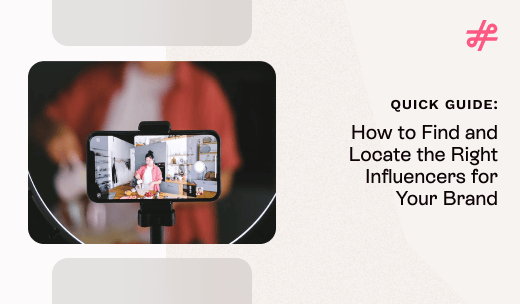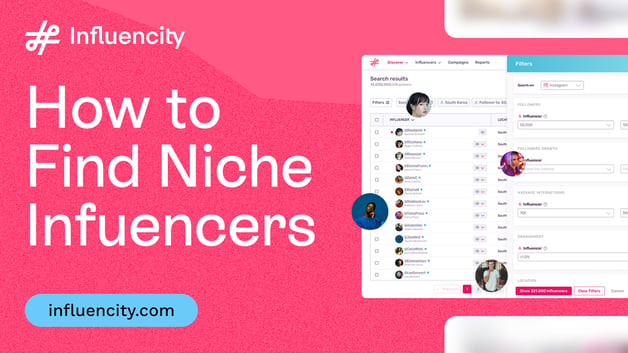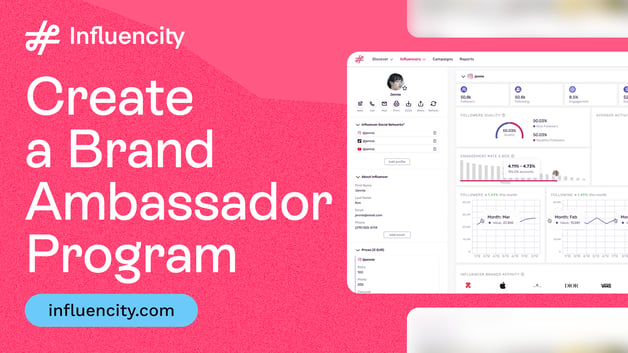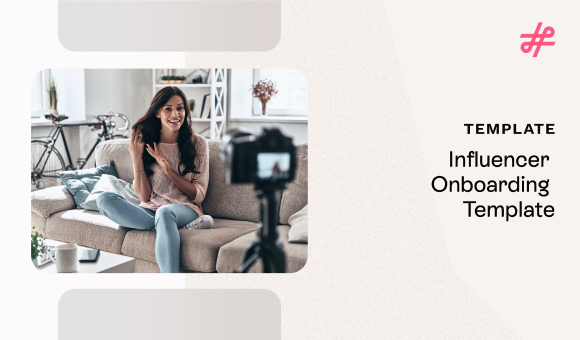There are a few key elements to consider when defining your brand voice and messaging.
Personality/Identity
Your personality or identity is who you are as a brand. Is it sophisticated but approachable? Is it playful but not silly? Is it calm and inviting?
Defining this will help influencers get a better sense of how to accurately represent your brand.
BUXOM Cosmetics makes it clear that their brand is big, bold, and sexy. They believe in taking up space and taking risks while encouraging people to be unapologetically themselves. So influencers will know that it’s okay to channel that main character energy when creating content for the brand.

Naturally, their influencer-generated content also channels this exact energy.
Tone
Your tone of voice defines how you speak. Is it casual and friendly? Is it fun and exciting? Or is it more refined and professional? Get as specific as possible with examples to help influencers understand how to speak to your target audience.
Language
On a related note, you’ll also want to highlight any specific languages that you want influencers to use when speaking about your brand. For instance, Canva wants to speak to a “community” instead of “users” and “customers.”
Similarly, make sure to list the words you want them to avoid. Whether these words don’t align with your brand identity or pose a compliance risk, it’s important to get as specific as possible.
 Source: Canva Brand
Source: Canva Brand
Values and Mission
What do you stand for as a brand? What do you believe in? And what are you looking to achieve? These values and mission should also be a part of your brand content guidelines to give influencers a better idea of the message you want to share. This will also help potential influencers assess brand fit before they decide to work with you.
With environmentalism being one of the core values that Patagonia upholds, the brand’s influencer and brand ambassador programs also reflect this. See how the brand partners with global surf activist, Belinda Baggs, to promote a cause and drive action.

Value Proposition
Next, your value proposition should also be a part of the brand content guideline. This will guide influencers on how to effectively position your offer to entice their audience. How does your brand add value to your customers? What sets you apart from the competition? Perhaps you offer high-quality, ethically sourced materials or maybe you offer some of the most inclusive shades to fit everyone, for instance.
For Fabletics, their supportive yet eco-friendly fabric innovations are a unique value proposition.

Here’s a post from one of the brand’s partners highlighting the fabrics.
Key Talking Points
In addition to these, you’ll want to provide influencers with a few key talking points to keep your messaging consistent. This is different from providing them with a message that they should use verbatim.
Instead, you’ll be sharing some of the main benefits you want to highlight and let them get creative with it. That way, they can infuse their unique voice when putting together a campaign message that aligns with your brand and its goals.
Call to Action
Finally, you should specify the call to action that should be included with your messaging. What action do you want people to take after seeing the campaign content? Do you want them to buy your product or sign up for something? Or perhaps you simply want them to share their thoughts and engage with the content.
Either way, make sure to provide clear instructions on how to include CTAs. That way, there’s no confusion or mixed messages across different influencer content. You’ll be consistently directing people toward the same action, regardless of which content they see.
Creating Visual and Aesthetic Guidelines
With most influencer campaigns today involving visuals, it’s important to ensure branding consistency even when it comes to the visual aspect of your influencer content. Make sure your content brand guideline includes the following key components.
Color Palettes
If there’s a specific color palette that you want to associate with your campaign, you’ll want your influencers to use it in their content. This creates visual consistency across all your campaign content.
So even if you have multiple influencers creating content in their own style, they’ll still have a similar look that people can associate with the campaign. Plus, they’ll have a coherent look even if you decide to repost them to your Instagram grid.
Notice how all these influencer posts tagging Gisou feature the same dusty pink color palette to create that signature Miami vibe. These posts are part of a campaign promoting the brand’s new Miami location.

Filters
On a related note, filters further add dimension to give visual content a certain look and feel. Whether it’s ‘80s grunge or whimsical fairytale, the right filters can give you the exact vibe that you want to exude as a brand or for a specific campaign. So make sure to specify if you’re going for a specific look and which filters influencers can use to achieve it.
I find that the warm and dreamy filter in the following influencer video gives off the perfect vibe to promote Maison Margiela’s “Afternoon Delight” perfume.
Logo Placements
For influencer content that’s going to feature your brand logo, you’ll want to give specific instructions on proper logo placements. You don’t want influencers repurposing or obscuring your logo in a way that doesn’t align with your brand identity. Moreover, you want them to avoid adding the logo in a way that would hide any important elements or information.
This is also important if you plan on repurposing the influencer content. So even if the influencers aren’t going to add the logo themselves, you’ll want them to create content keeping future logo placement in mind. Usually, this means placing important elements away from where the logo would be.
See the Disney logo at the bottom of the following influencer video promoting the ColourPop x Disney Tangled collection.
Overall Content Style
Finally, you’ll want to also include information about the overall content style you want to maintain. This will cover overarching brand aesthetics, typography, graphic elements, and any other specifics not covered above.
For instance, make sure to specify the font you want influencers to use as text overlay when creating Reels or TikTok videos for the campaign. That way, you can maintain a coherent style across all your campaign content. And even if you decide to repost the content to your own feed, it won’t look out of place.
Do’s and Don’ts for Authentic Brand Integration
Now that I’ve covered the basics, you’re pretty much set to start preparing your content brand guideline. But if you’re too rigid with your guidelines, you could risk losing authenticity. So let me share a few do’s and don’ts to ensure authentic brand integration even with a brand guideline.
Do: Share Mood Boards for Inspiration
People learn best when they can visualize what you’re talking about. You may thoroughly describe the aesthetic and vibe that you’re looking for. But sharing visual examples is the best way to maintain clarity and avoid miscommunications.
So I highly suggest sharing mood boards to serve as inspiration for your influencers. Add color palettes, objects, and images that perfectly capture the campaign aesthetic that you’re looking to create. These boards will also make it easier for you to bring your campaign vision to life and see how well it all comes together.
Canva is a favorite for me when it comes to creating mood boards. The platform offers plenty of mood board templates that you can customize and share with your influencers.

Do: Prepare a Visual Brand Guideline Document
On a related note, make sure to put all these instructions together in a visual document. The goal is to unify all the information for easy reference, so influencers don’t have to switch between multiple documents while creating content for your brand. Plus, helping them visualize the information will help them process it more easily.
Include charts, graphs, and images wherever possible to improve understanding. The idea is to include any visual element that could help you get your message across more clearly.
Check out how Canva uses visuals to share a do’s and don’ts checklist for showcasing the brand’s UI. You can use a similar approach to help influencers visualize the instructions that may seem unclear just through writing.

Don’t: Rely on Scripts
Sometimes, in an attempt to stick too close with their brand identity, brands may share scripts with influencers. But having them use the same messaging verbatim will result in content that doesn’t have the influencer’s authentic voice.
So if you don’t want the influencer content to feel forced or inauthentic, ditch the script.
Instead, share a few key talking points so they know what to include in their content. And leave the rest to them. Let them infuse their unique and authentic voice into the content so you get something that sounds natural while still covering all the important details.
Notice how the following two influencer posts promoting Frontgate’s Resort towels both focus the messaging on personalization with monogramming. Yet the two content pieces are completely unique.
The first influencer talks about using the towels to refresh her daughters’ rooms.
The second talks about adding warmth to your bathroom using the towels. Both influencers also use words like “plush” to describe the towels but in their unique voice.
Don’t: Direct Everything
On a related note, authenticity comes from giving influencers the freedom to be their unique and creative selves. So while you provide them with guidelines, don’t make the mistake of directing everything they do.
Your content brand guideline should only serve as a guide and an inspiration to help influencers create content that aligns with your brand. Give them some rules and pointers. But avoid interrupting with the creative process as you could end up with content that feels unnatural for the influencer.
Build Authentic and Brand-Aligned Influencer Campaigns
There you have it – all the key details to include in your content brand guidelines. Use the tips and ideas I shared above to come up with guidelines that will inspire influencers to create authentic, brand-aligned content.
Tags:
Content Brand Guidelines






















%20and%20How%20Can%20They%20Benefit%20Your%20Brand%20article.jpg?length=628&name=What%20Are%20Key%20Opinion%20Leaders%20(KOL)%20and%20How%20Can%20They%20Benefit%20Your%20Brand%20article.jpg)








